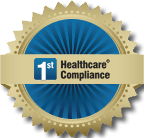With Covid-19 changing daily routines and canceling all sports and activities for the last few months, many sports enthusiasts and athletes have been out of commission for far too long. As we gradually return to a “new” normal and implement our fitness routines, it is essential to ease back in to avoid injury. After a period of inactivity, your body needs to adapt and slowly increase activity as tolerated.
You may ask, “How do I go about this safely?” The answer is - make a plan.
Return to play:
Whatever your end goal - whether you are a collegiate athlete, a weekend warrior, an avid yoga goer, a once a week golfer or a high school track star - you have to start back at square one after being off your game for a few months.
Before you jump back in, start by creating a daily stretching plan, then slowly incorporate a strengthening workout to complete every other day. Core strengthening and cardio or aerobic exercise are also essential to do every day as you gradually increase your baseline activity.
If you were used to running 5 miles a day or squatting 250 pounds, do NOT start working out at that previous intensity. Instead, begin at HALF of your “normal” activity (in weight, distance, duration, intensity, etc.), and slowly increase as tolerated, provided you do not feel pain while doing it, that night, or the next day.
Recovery:
It is very common to be sore after returning to an activity that you have not done in a while. Soreness is okay and expected, but do not neglect persistent pain that continues for more than a few days. Sharp shooting pain felt during activity could be an overuse injury and a sign you tried to do too much too soon. LISTEN to your body. If your body is telling you that you need a rest day, take it. Your body will thank you later.
If you are feeling tightness in your muscles, applying heat to them before stretching will help warm up and loosen your muscles to allow for maximum mobility. If stretching and heat do not help feeling sore after exercise, try applying ice or taking anti-inflammatories.
Any training regimen, whether rebuilding or maintaining, is not complete without proper nutrition. If you are not fueling your body with a balanced diet of fruits, vegetables, complex carbs, and lean protein, as well as maintaining good hydration before, during, and after exercise, you will not be able to reach your peak performance. When you ask your body to perform on an empty tank, it is harder for your body to train and recover, and most importantly, injuries can often occur.
Injury prevention:
Preventing injury is key to any training or participation in athletic activity. The last thing that you want is to sustain an injury, sidelining you or setting you back when trying to return to your sport. Your chances of avoiding injury are best if you can develop and stick to your training plan. Gradually increase activity intensity, incorporate strength, conditioning, and core workouts, stretch before and after exercise, maintain a healthy diet and hydration, get a good night’s sleep and always listen to your body.
Dr. Lisa Daye and her Sports Medicine Orthopedics team are here for you. Whether you need to get your training back on track, avoid injury, or are injured and need treatment, Dr. Daye and her team can work with you to develop a plan that’s right for you.
Call 716.500.BONE(2663) for more information or to schedule an appointment.

 APPLY ONLINE TODAY!
APPLY ONLINE TODAY!





